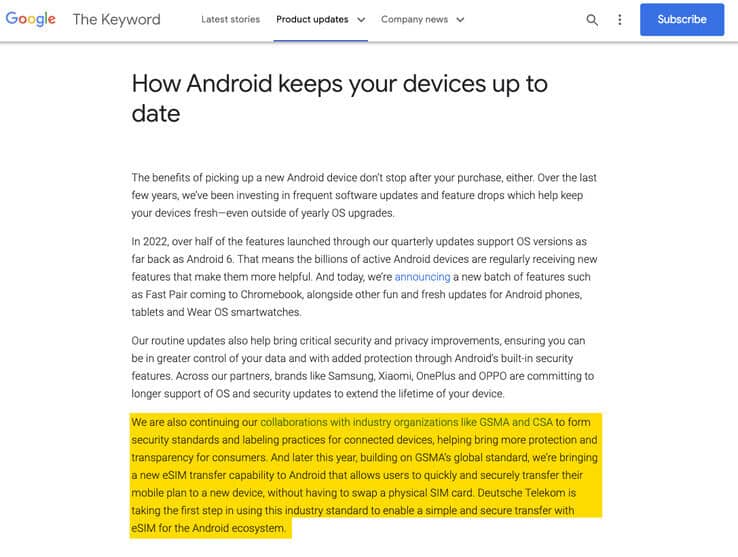The leaks surrounding the Google Pixel 8 and Pixel 8 Pro are adding to the anticipation, and a new revelation has emerged. According to sources, the successors to the Google Pixel 7 series are poised to receive an eSIM feature in certain regions. So, how does this work, and where can you expect to find this technology?

Which regions will the Pixel 8 and Pixel 8 Pro get eSIM ?
The eagle-eyed Mishaal Rahman spotted an intriguing detail in the renderings of the Pixel 8 and Pixel 8 Pro, shared earlier by @OnLeaks. These renderings showcased both devices without a SIM card port, a departure from earlier iterations. This omission might seem significant, especially since Apple has already paved the way for eSIM-only devices with the US versions of the iPhone 14 series.
Rahman’s insight highlights that the CAD files used by @OnLeaks might not encompass every detail, and this is something to keep in mind. The potential discrepancy between CAD renderings and actual retail units opens room for interpretation. It’s worth noting that Google introduced a “new eSIM transfer” application in February, suggesting a transition between devices and even the conversion of traditional SIMs to eSIMs.
However, Max Weinbach provides a counterpoint, suggesting that Google is urging Android OEMs to retain SIM card ports for as long as possible. Weinbach argues that Google lacks the clout Apple possesses to eliminate SIM card ports from its devices. Regardless, it’s expected that the Pixel 8 and Pixel 8 Pro will leverage the Samsung Exynos 5300 modem, alongside their Tensor G3 chipset, for cellular connectivity.
As a bonus, both models are set to serve as testing grounds for Google’s new camera UI, a recent unveiling that has piqued the interest of tech enthusiasts. The Google Pixel 8 and Pixel 8 Pro promise to bring a blend of innovation and familiar features, making waves in the ever-evolving smartphone landscape.